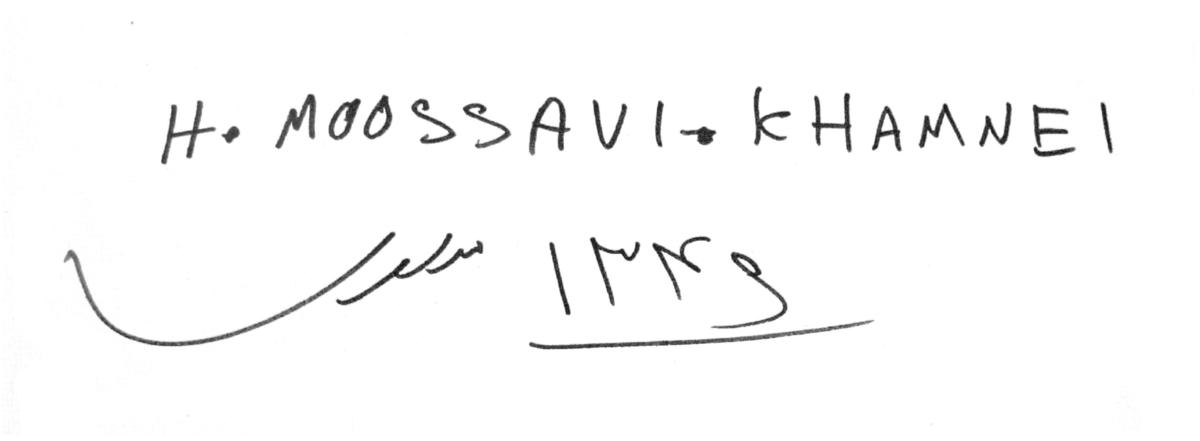
Mir-Hossein Mousavi
Artist statement published in a pamphlet for his exhibition in January 1968 in Tehran.
Translated from Farsi by Sohrab Mohebbi.
The contemporary artist, much more than artists in the past, uses the “accident” as part of his artistic creation. Often, some form of control appears in the course of the accidental event [through which] the artist’s expression finds its specific features. If in the West this is to demonstrate the originality of technique and evaluation of the used material, in the East it arises from the fact that accident as a natural affair is inseparable from control as a human affair. In the Far East, the artist sees his contribution in the creation of an artwork as equivalent to the work of the paintbrush or nature. This extends so far that in Taoism, human creative force is not seen as more creative than the elaborate architecture of natural vegetation, nor as separate from it. That’s why conscious art has another meaning in the East, with spontaneity carrying such a profound significance.
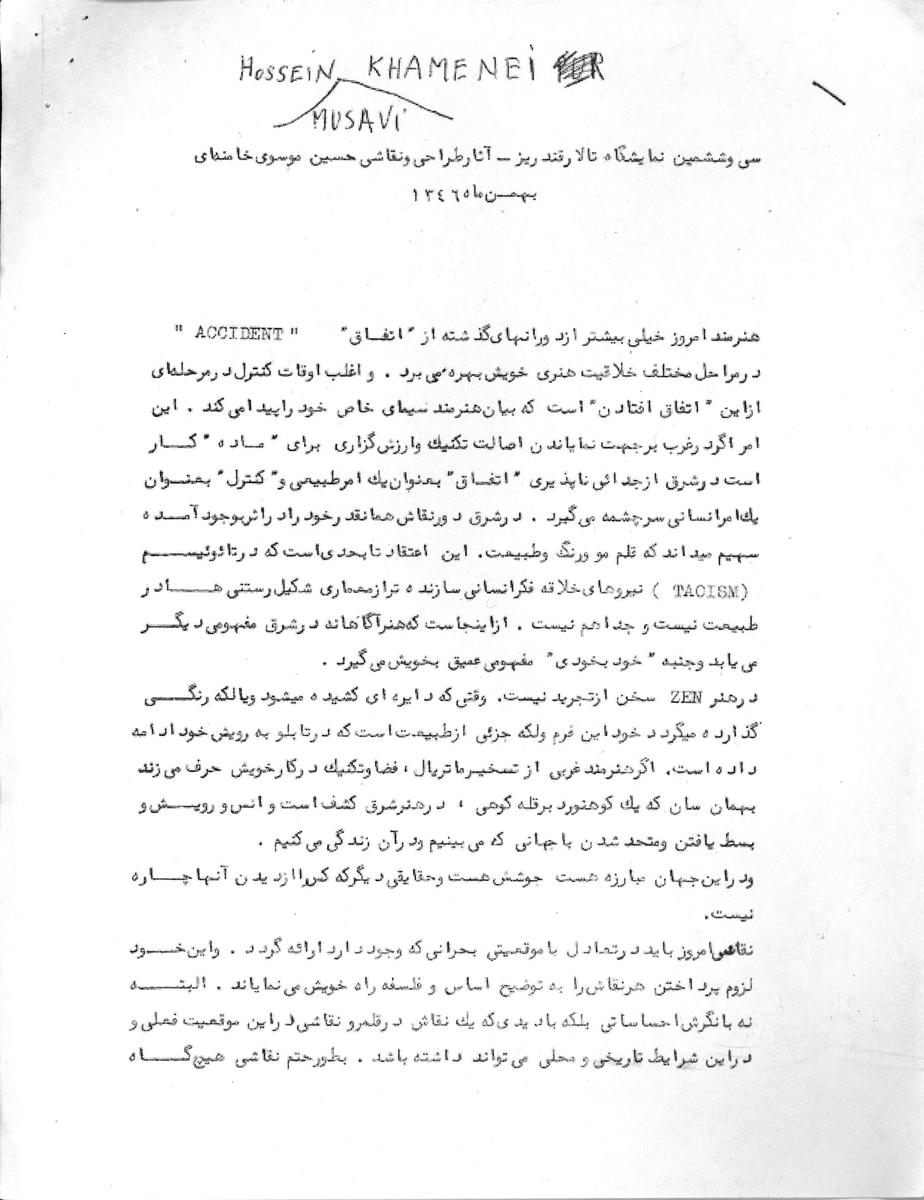
In the art of Zen, there’s no talk of abstraction. When a circle is drawn or a spot of color is applied, this form in itself is part of nature, which has continued its growth in the painting. If the Western artist speaks of domination over material, technique, and space in his work, like a hiker on top of a mountain, in the art of the East it is exploration, intimacy, growth and expansion, and unification with the world that we see and live in. And in this world there are battles and struggles and other things that one cannot avoid seeing.
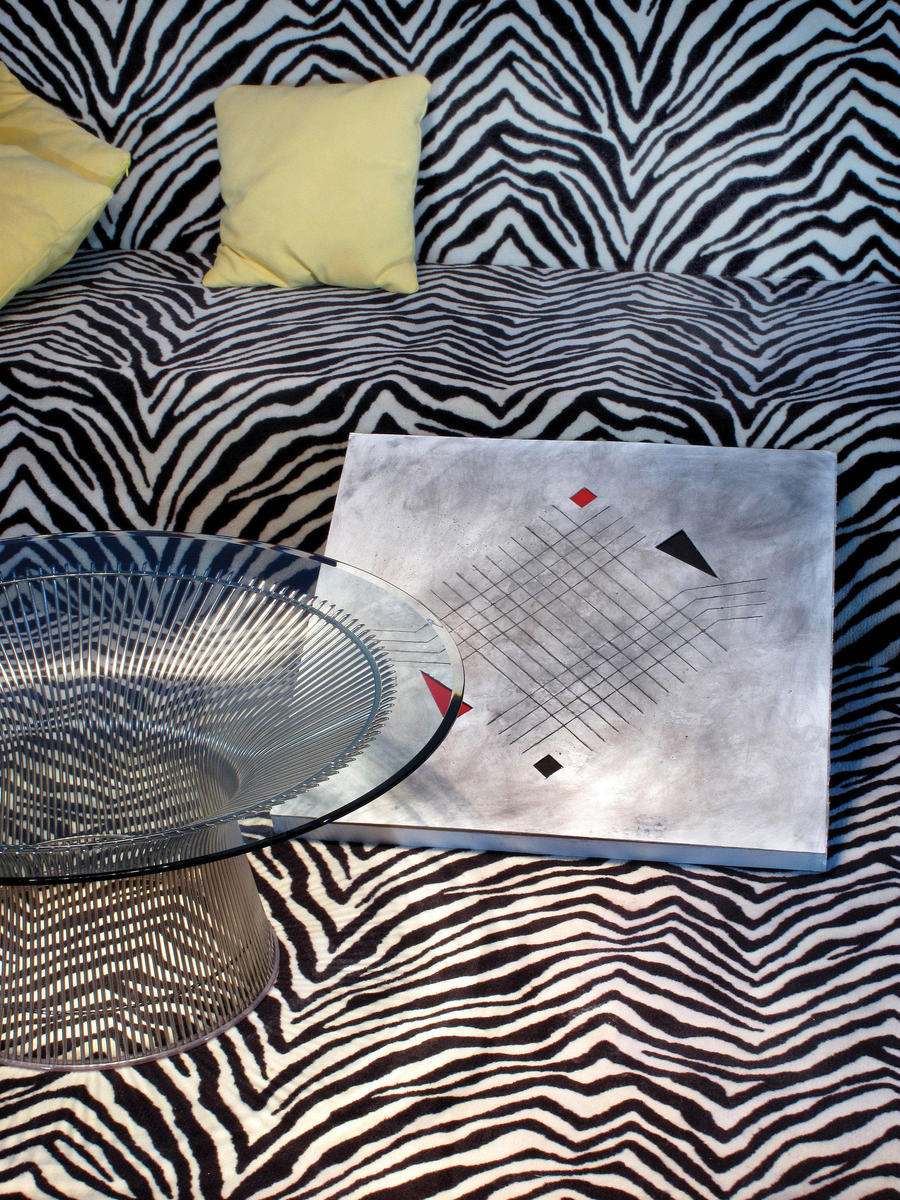
Painting today needs to be presented in equilibrium with the existing critical situation. And this demonstrates each artist’s obligation to explain the basis and philosophy of his path. But not with a sentimental approach — rather, with the painter’s view of painting existing in the current situation and rooted within a historical and local context.
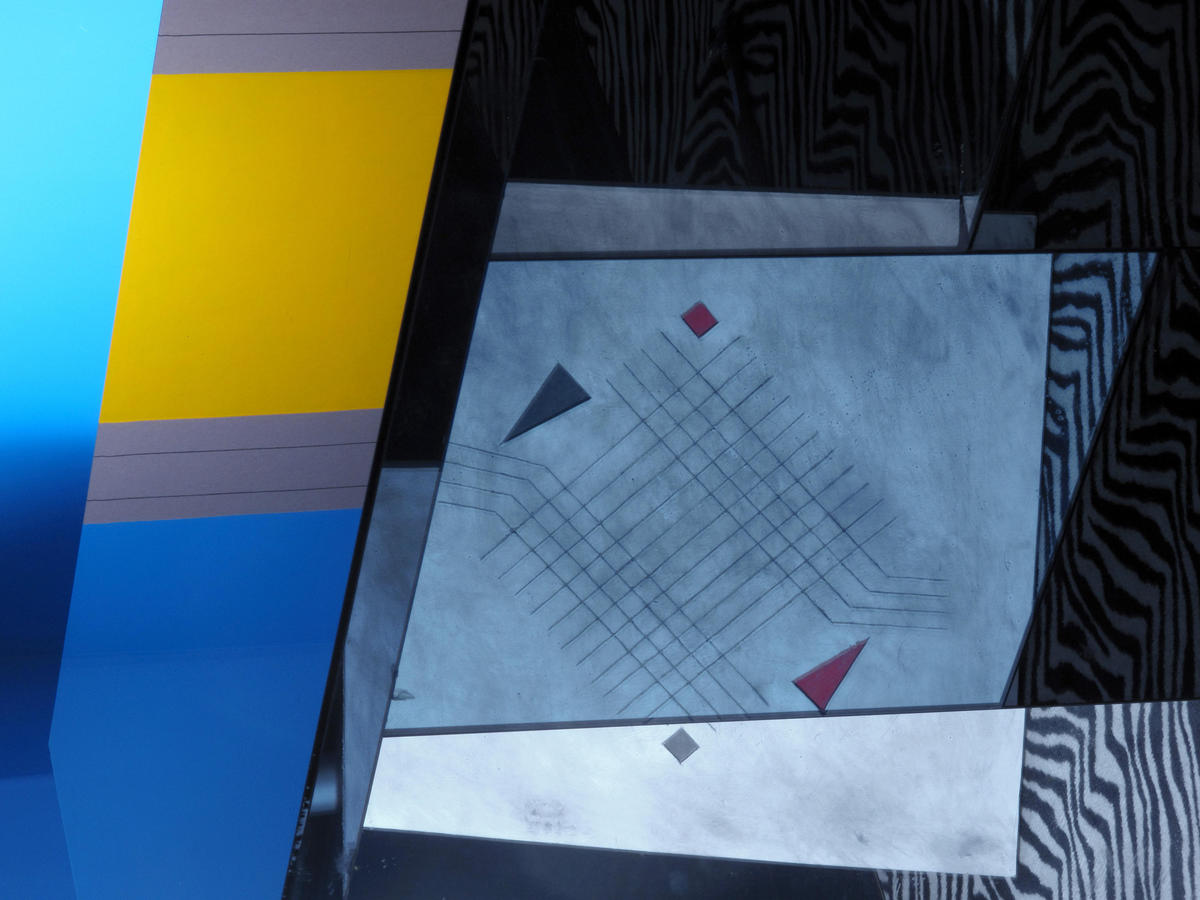
Certainly painting can never take the place of [direct] struggle and fighting for a single individual or many people, and the paintbrush cannot take the place of a common struggle for freedom and emancipation. And the work of each artist at any level of expression cannot excuse him from his social responsibilities, since it is within the limits of these responsibilities that his art can offer a vision into the future and a direction toward a way of life.
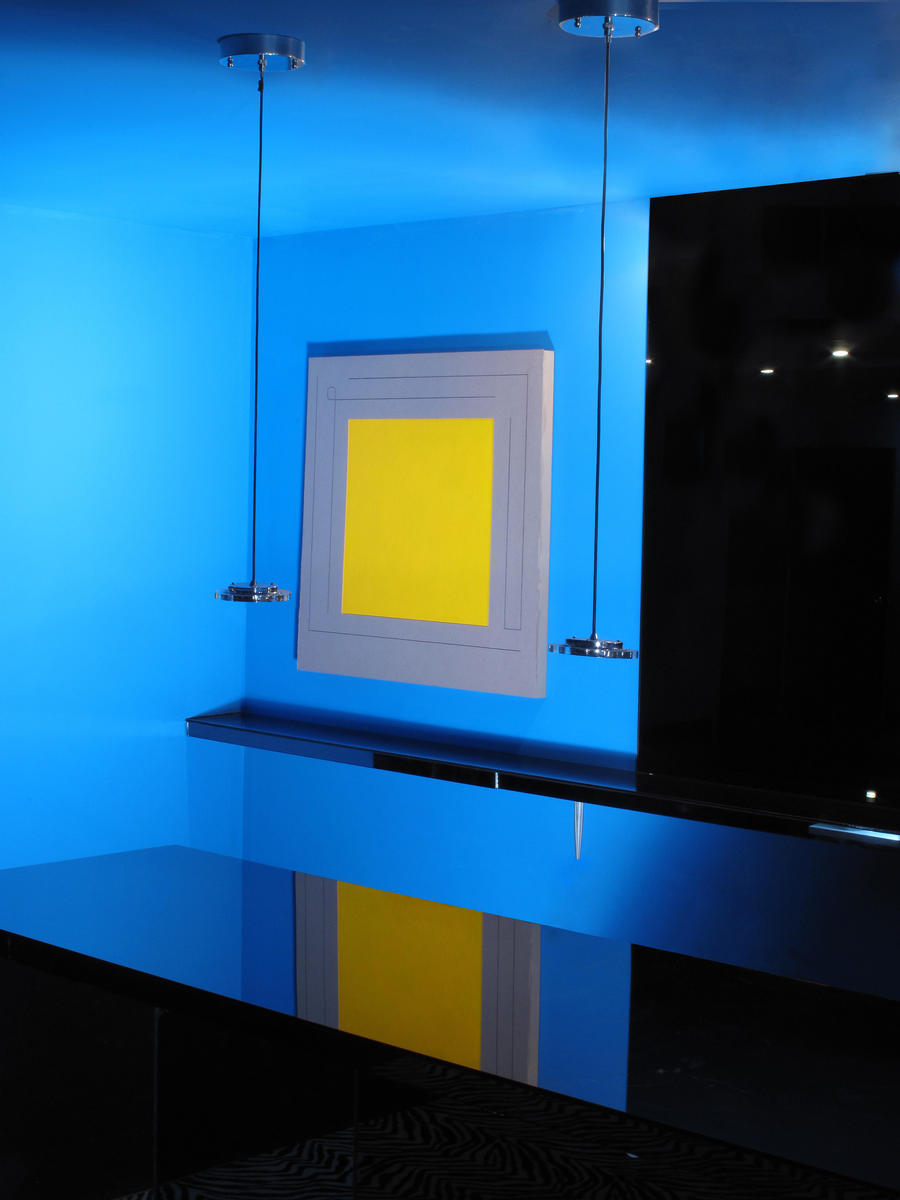
Why did I paint abstractions? I do not insist on the difference between abstract and figurative art, especially with what I pointed out about the concreteness of geometric forms. (I am referring to the conventional meanings of “abstract” and “figurative” in modern painting.) But what is important is that when I think about the conscious and unconscious presence of technology in art today, I see that by producing abstractions, painting, and plastic arts played an important role in bringing together the lives of humans and machines.
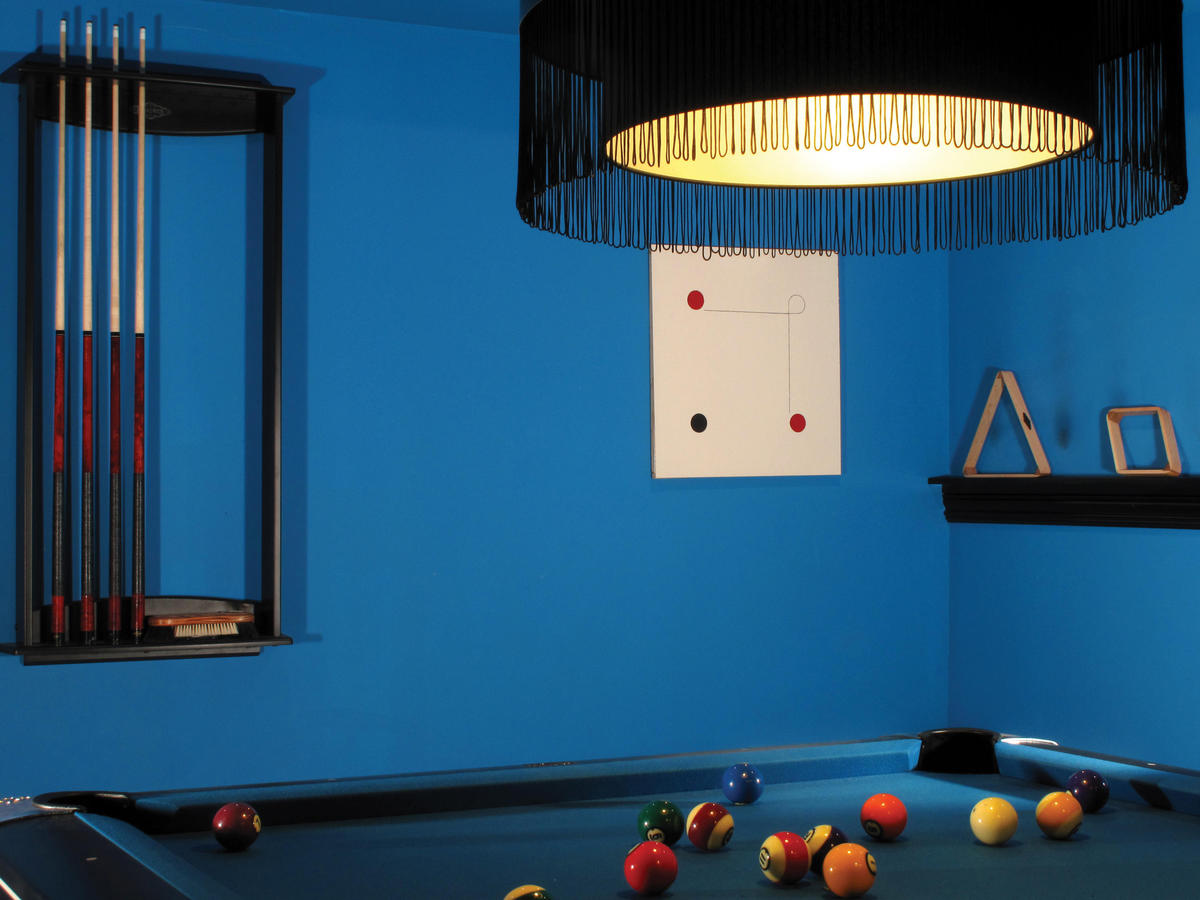
This issue does not apply to us like the contemporary Western artist who sees the factory as a museum — we are consumers! — but we have to say that contemporary man’s contact with the environment, his conceptions about it, and the efforts he makes in it all take place through “designed” objects, whose relationship with abstract and formal visual arts is significant in people’s lives. The social goal is more hidden within the painter’s rational reflections in front of forms, spaces, and masses of things. We live in forms and colors and spaces and masses of things that are made by machines, from our architectural components to plastic watering cans, and all of these and the rhythm they create is a part of the objective manifestation of historical and social facts of the times that we are living in. The painter’s primary working materials are nothing except these.
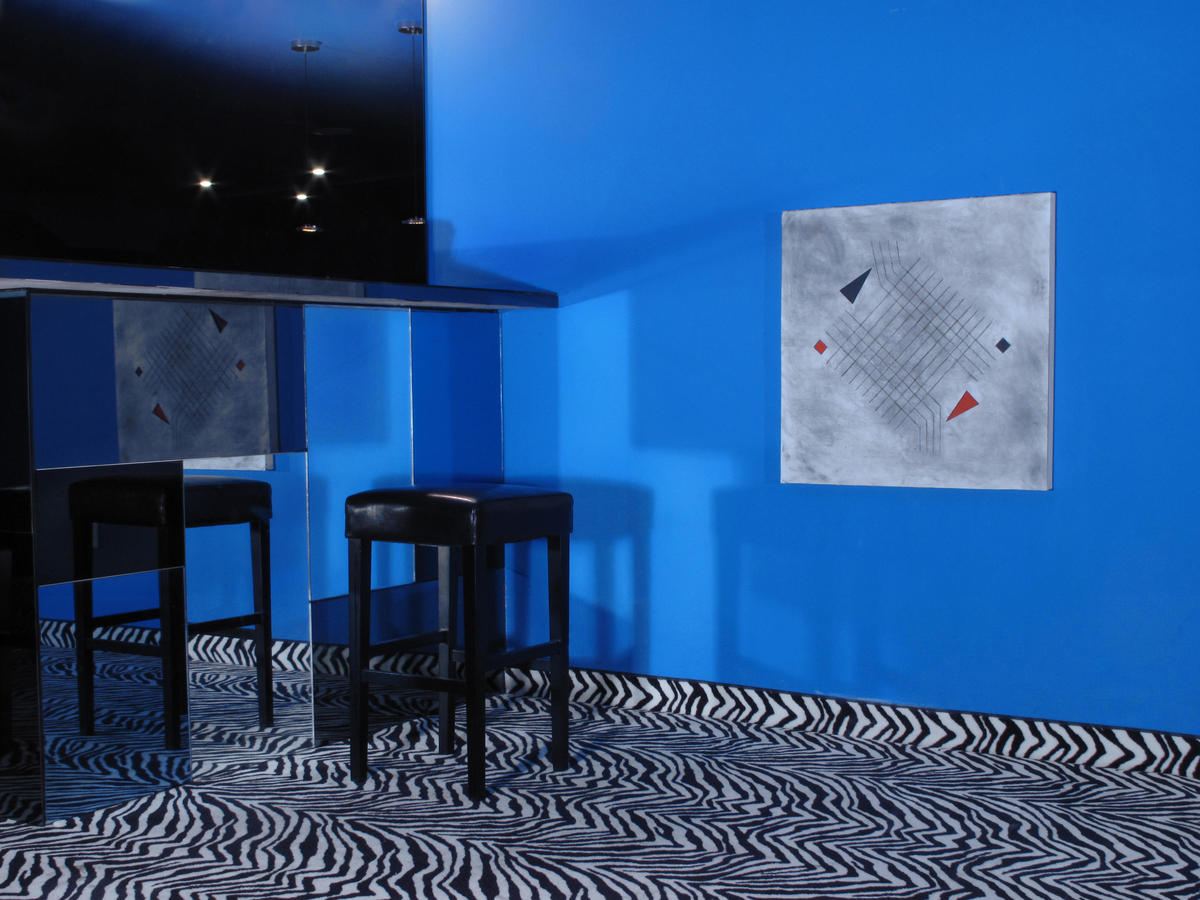
His rational reflections in front of such conditions can represent an effort to create a constructive order in this chaos. Just as we need production for our material needs, we need creativity for our spiritual needs. This means engaging in an artistic work that, considering the social realities, takes a rational stance vis-à-vis this situation. And we know that the basis of this kind of art cannot be an old or new Western aesthetic value and neither could it be solely committed to old traditions.
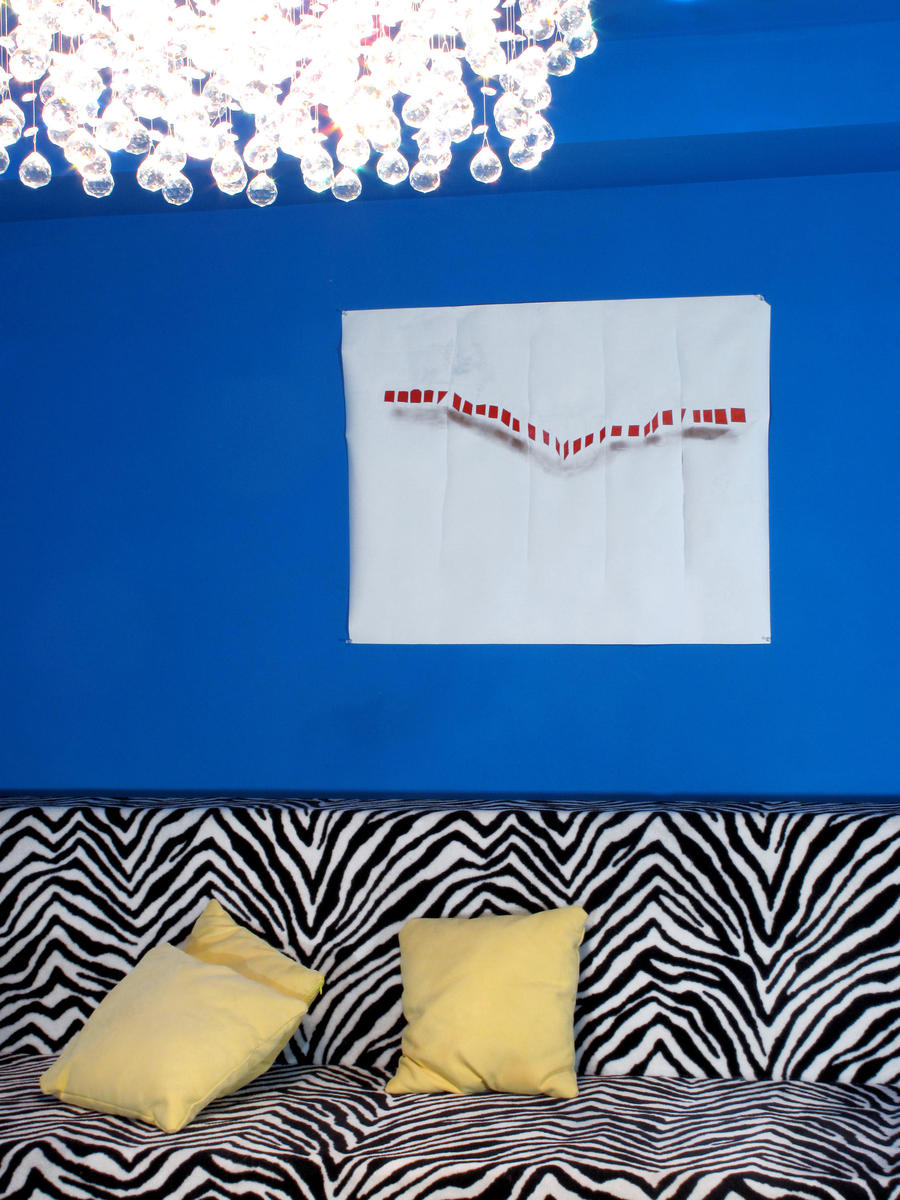
If it is claimed that humankind is at the center of art, it does not mean that we need to present his relations and questions in physical or figurative manifestation. Rather, any logical reaction to the environment he lives in will be a matter of humanity.